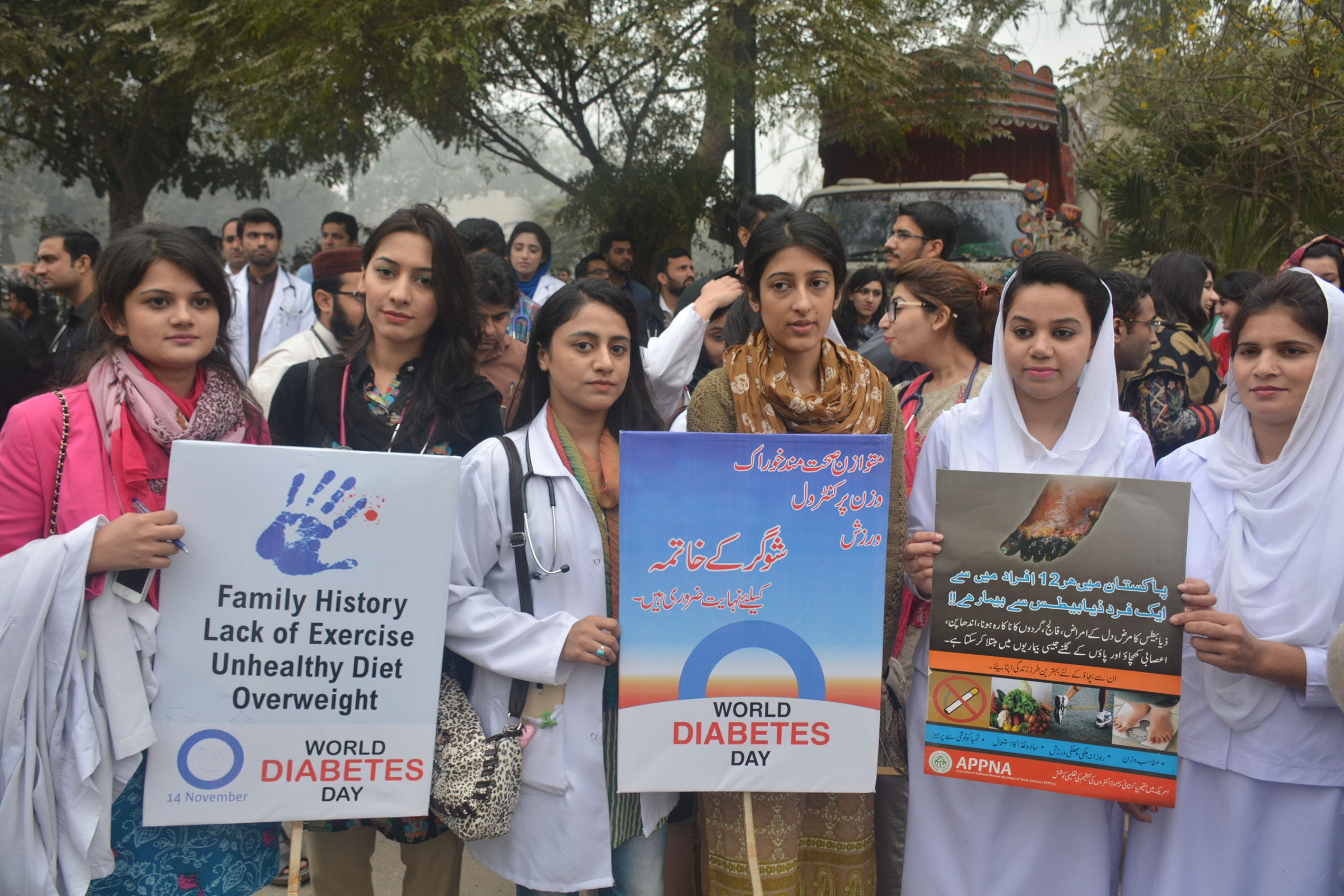
The recently opened Diabetic Foot Care Clinic at Mayo Hospital is the first of its kind in Punjab

Every 30 seconds a lower limb is lost somewhere in the world as a consequence of diabetes. Seventy to eighty per cent of lower limb amputations are performed on patients with diabetes and every amputation, almost 80 per cent, are preceded by foot ulcer. The person whose foot is severed does not survive beyond five years after the amputation but people are not aware of the risk foot ulcers pose to diabetic patients.
"Five-year mortality after lower limb amputation due to diabetes is more than the combined 5-year mortality due to cancers of breast, lymphoma and prostate," says Dr Muhammad Arshad Siddiqui, Consultant Diabetologist and Podiatrist at the Diabetic Foot Care Clinic that opened on World Diabetes Day at Mayo Hospital Lahore. It is the first of its kind in Punjab. There is only one such clinic in Karachi and that too in the private sector, at Baqai Hospital.
The Foot Care Clinic in Room No.42 of Out Patients Department of Mayo Hospital is open on Wednesdays, working under umbrella of Department of Endocrinology and Metabolic Medicine. The podiatrist at the clinic briefs TNS about the issue:
Diabetes is a complex, chronic illness requiring continuous medical care with multi-factorial risk-reduction strategies beyond glycemic control. Ongoing patient self-management, education and support are critical to preventing acute complications and reducing the risk of long-term complications. Significant evidence exists that supports a range of interventions to improve diabetes outcomes.
Foot ulcers and amputations, which are consequences of diabetic neuropathy and/or peripheral arterial disease (PAD), are common and represent major causes of morbidity and mortality in people with diabetes. Early recognition and treatment of patients with diabetes and feet at risk for ulcers and amputations can delay or prevent adverse outcomes.
According to International Diabetes Federation (IDF), with comprehensive foot assessment, multi-disciplinary team and effective foot care team, almost 80 per cent of amputations could be avoided. "Diabetic people have 25 per cent chance of developing foot ulcers in their life time," says the doctor.
Every 4th Pakistani above age 20 is diabetic and around 26 per cent of people over the age of 20 can become diabetic any time, according to a National Diabetes Survey of Pakistan carried out by the Baqai Institute of Diabetology and Endocrinology (BIDE) and the Ministry of National Health Services. The BIDE survey puts the number of diabetes patients in Pakistan at 50 million, and says 10 per cent of them have foot ulcer.
Foot assessment
At the Diabetic Foot Care Clinic there is a primary assessment form which the doctors fill as they examine a patient. The feet are to be checked for evidence of redness, blister (abla), callus (a thickened and hardened part of the skin or soft tissue, especially in an area that has been subjected to friction), open sores (ulcer), swelling, dryness, nail thickness and tenderness.
The doctor warns against cutting nails from the corners of a diabetic person, it has to be done very carefully lest a tissue gets bruised. All the instruments at the clinic are sterlised but there are not many.
The patient is counseled about cleaning shoes before putting them on, changing shoes daily if possible as alternate shoes distribute pressure differently. Here the doctor advises wearing soles especially meant for diabetic patients. But the soles are expensive -- for Rs3,500. Patients who come here do not have money to get one-month medicines, how can they buy soles? "Added sole distributes pressure to other areas of the feet," says the doctor. A footwear department is needed in government hospitals.
Cleaning feet, not using perfumed soaps, keeping foot moisturised with cream but not between the toes, never walking barefoot and always wearing shower shoes are some of the guidelines for people who come to the foot care clinic.
The staff takes the DM of the patient into account which is width within the shoes. HTN, also known as high blood pressure, a long term medical condition in which the blood pressure in the arteries is persistently elevated, is also checked, so is Body Mass Index (BMI) and Ankle-Brachial Index (ABI). The ABI test compares the blood pressure in your ankles to the blood pressures in your arms and HbA1c -- the higher the HbA1c, the greater the risk of developing diabetes-related complications. Also, whether the patient is a smoker.
If the Ankle Brachial Index is less than 0.9, the person is vulnerable to infection. "Prevention can save us from amputation," says Dr Siddiqui.
For this they give flyers to the patients who visit them that educates on how to care for their feet and how to identify Hypoglycemia (low blood sugar). They also give flyers that are guidelines on healthy lifestyle.
While Pink Ribbon has been able to create awareness about breast cancer and raise funds as well, which is a good augury, Blue Ribbon has not been able to muster as much support for Diabetes. "It is to be noted that 3.6 million people died of Malaria, HIV and TB together in 2015 while 5 million people died of Diabetes alone the same year," says the doctor.
This year the theme of World Diabetes Day is ‘women and diabetes’ which is the 9th leading cause of women mortality globally. In Pakistan, we are still deficient regarding data related to diabetes but we need to adopt a strategy to reduce the burden of this disease.